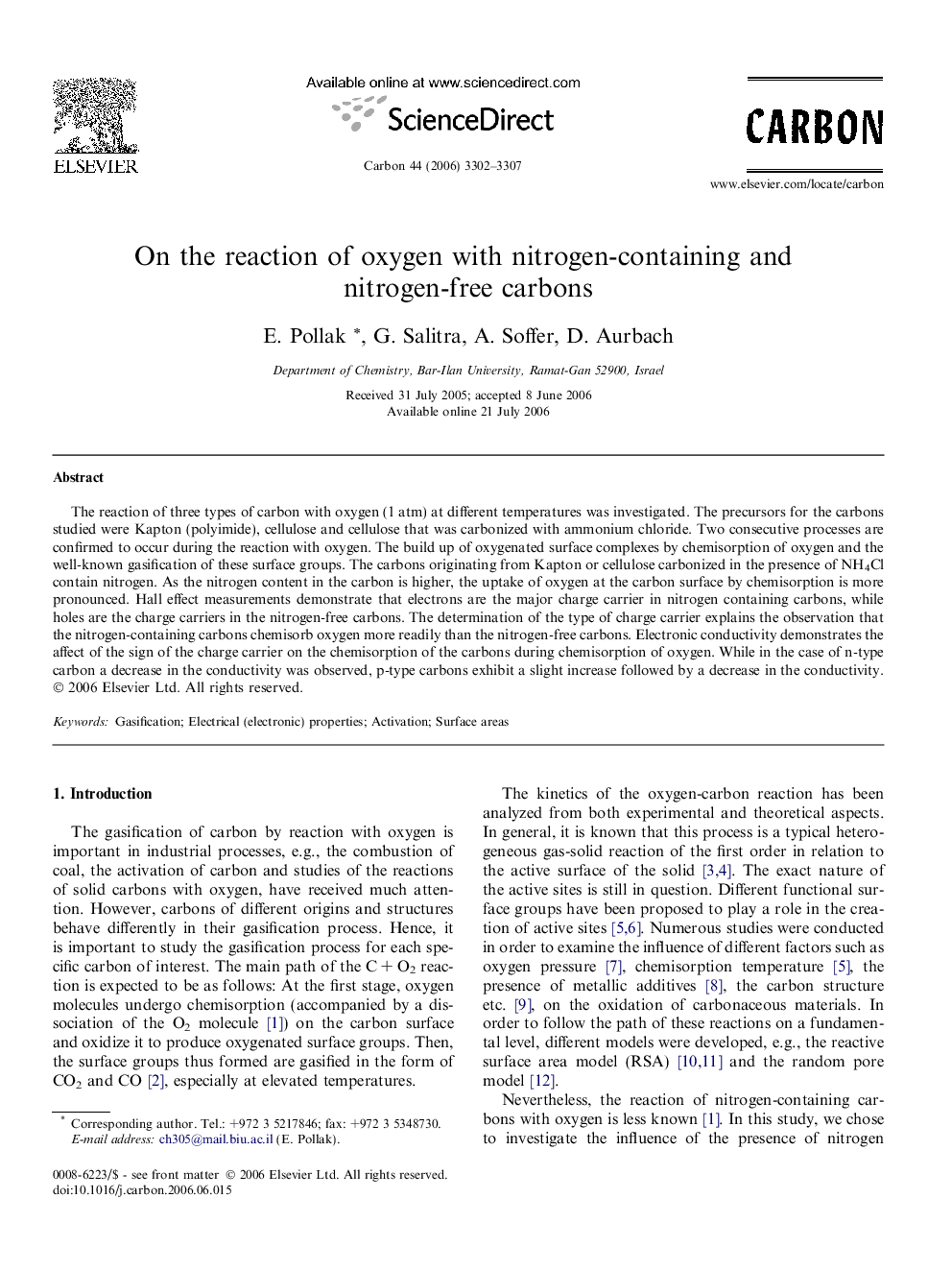| Article ID | Journal | Published Year | Pages | File Type |
|---|---|---|---|---|
| 1419633 | Carbon | 2006 | 6 Pages |
The reaction of three types of carbon with oxygen (1 atm) at different temperatures was investigated. The precursors for the carbons studied were Kapton (polyimide), cellulose and cellulose that was carbonized with ammonium chloride. Two consecutive processes are confirmed to occur during the reaction with oxygen. The build up of oxygenated surface complexes by chemisorption of oxygen and the well-known gasification of these surface groups. The carbons originating from Kapton or cellulose carbonized in the presence of NH4Cl contain nitrogen. As the nitrogen content in the carbon is higher, the uptake of oxygen at the carbon surface by chemisorption is more pronounced. Hall effect measurements demonstrate that electrons are the major charge carrier in nitrogen containing carbons, while holes are the charge carriers in the nitrogen-free carbons. The determination of the type of charge carrier explains the observation that the nitrogen-containing carbons chemisorb oxygen more readily than the nitrogen-free carbons. Electronic conductivity demonstrates the affect of the sign of the charge carrier on the chemisorption of the carbons during chemisorption of oxygen. While in the case of n-type carbon a decrease in the conductivity was observed, p-type carbons exhibit a slight increase followed by a decrease in the conductivity.
